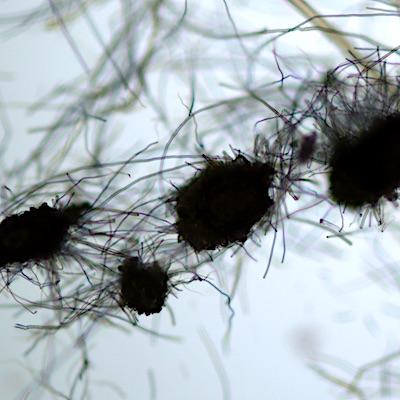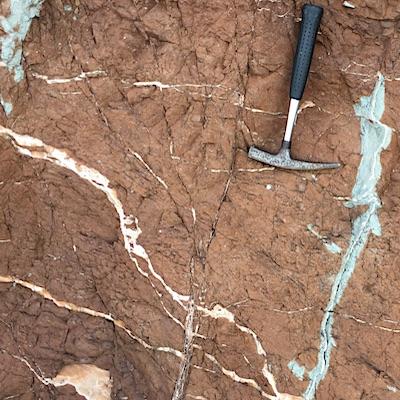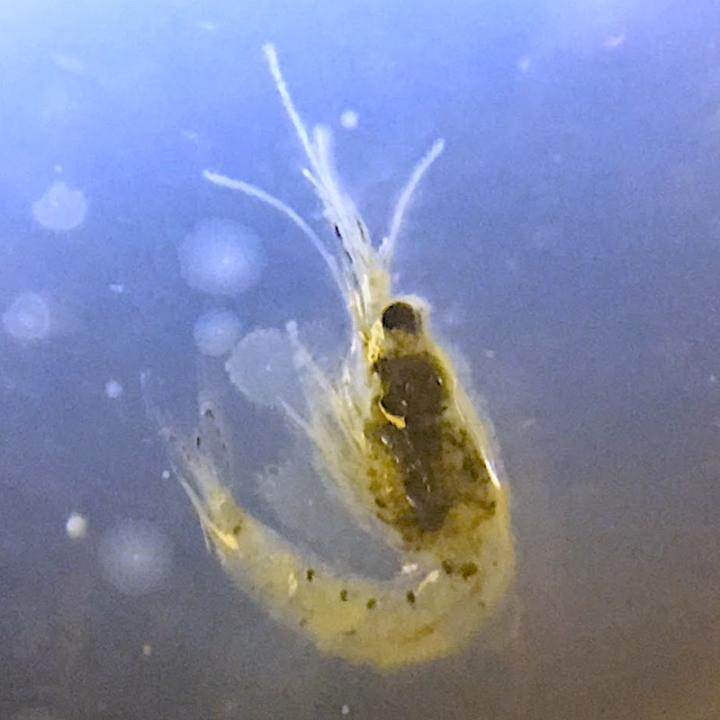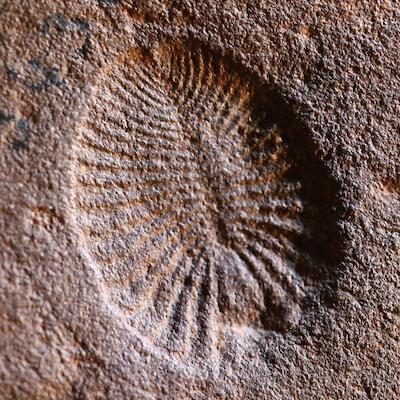Research Interests
An overview of our research
The Planetary Palaeobiology Group conducts research at the interface of palaeobiology and astrobiology, using both dedicated laboratory space and shared facilities at the UK Centre for Astrobiology, the School of GeoSciences, and the wider University. Our work benefits from numerous local and international collaborations. Specific areas of interest include:
1. Fossils, pseudofossils and dubiofossils on Mars, Earth, and beyond

A variety of ambiguous geological structures and materials on Earth, in martian meteorites, and on Mars have been controversially interpreted as evidence of ancient life. The astrobiology community as a whole is highly trained in the study of a huge variety of real microbial fossils and other biosignatures, but as a result tends to see biosignatures even where they do not exist. To counter this tendency, it is important to investigate how non-biological processes (e.g., far-from-equilibrium processes of chemical reaction, diffusion, and precipitation) can produce pseudofossils. We have demonstrated in the lab that microscopic filaments made of iron oxide minerals — including hematite tubules interpreted by other workers as the oldest fossils on Earth — may result from naturally occurring, abiotic "chemical gardens" formed by such processes (McMahon, 2019). We have reported the discovery of ambiguous candidate fossils ("dubiofossils") in ancient Mars-analogue environments (McMahon et al., 2021). We have reviewed the processes that may lead to misleadingly lifelike pseudofossils discoverable by current and forthcoming rover missions on Mars (McMahon & Cosmidis, 2022). Key collaborators in this area include Anna Neubeck and Sigrid Huld in Uppsala, and Oliver Steinbock and Pamela Knoll at Florida State University, and Julie Cosmidis at Oxford.
2. Subsurface astrobiology: habitability and biosignature preservation underground on Earth and Mars

On Earth, pores and fractures underground are home to vast numbers of microorganisms, which provide important insights into the habitability of other planets. We have led studies evaluating the total biomass of this hidden "deep biosphere" at the present day (McMahon and Parnell 2014) and in the geological past (McMahon and Parnell, 2019). On Mars and other cold planets, the deep subsurface may offer a warm refuge for microbial life from the harsh conditions at the surface. We have therefore investigated the habitability of subsurface environments on Mars and other planets by reevaluating the circumstellar habitable zone (McMahon et al., 2013), reviewing the physical and chemical controls on subsurface habitability (Parnell and McMahon, 2016), highlighting the habitability of vesicular basalt (McMahon et al. 2013), demonstrating that basaltic martian meteorites contain methane (Blamey et al., 2014) and investigating how geological processes can release chemical energy to support life (McMahon et al., 2016). We have reviewed the fossil record of Earth's deep biosphere (McMahon and Ivarsson, 2019), investigated uranium isotopes as a potential biosignature of subsurface bacterial life (McMahon et al., 2018), and reported sulphur isotopic evidence of life in English gypsum veins that are similar to gypsum veins on Mars (McMahon et al. 2020). John Parnell at the University of Aberdeen is a key collaborator on much of this work. Work on this topic from 2017–2019 was supported by the European Commission through a Marie Curie Fellowship held by Sean McMahon (D-BIOME).
3. Taphonomy: Processes of fossil preservation on Earth and Mars

Richard Feynman famously wrote, “What I cannot create, I do not understand”. Fossils are extremely difficult to create, and are consequently poorly understood. To read the fossil record correctly and account for its biases and omissions we must understand the complex chemical and biological processes by which fossils actually form — particularly those rare fossils that are "exceptionally well preserved" and therefore play an outsized role in palaeobiology. Experimental studies of organic decay and preservation ("experimental taphonomy") offer important clues, but there is much still to be done. In particular, the roles of microrganisms in the preservation of animal and plant tissue are still coming into focus (Briggs and McMahon, 2016). We have helped to show that microbes play a key role in preciptating clay minerals and iron oxides that mediate the fossilization of plant tissues (Locatelli et al., 2017). We have shown that the inhibition of organic decay by certain clay minerals may help to explain the remarkable preservation of Burgess Shale-type fossil assemblages (McMahon et al., 2016). We have investigated how sea anemones decay in order to guide interpretations of some of Earth's oldest fossil animals (McMahon et al., 2017). We have helped to discover new evidence that iron sulfide minerals resulting from bacterial sulfate reduction mediated the preservation of some of Earth's oldest fossil animals (Liu et al., 2019; Shore et al., 2021). Finally, we have shown how the science of fossil preservation — taphonomy — provides important clues about where fossils (broadly construed) might be found on Mars (McMahon et al., 2018). Ongoing work addressing the fossilization of microorganisms is supported by a Newton Fellowship from the Royal Society, awarded to Corentin Loron.
4. The origin of life and other evolutionary milestones

The origin of life and major turning points in the history of the biosphere are areas of central concern to astrobiology. In collaboration with Anna Neubeck of the Uppsala University, Sean McMahon has recently co-led the production of an edited volume, "Prebiotic Chemistry and the Origin of Life" (Springer, 2021). We have contributed to studies of the origin and earliest evolution of life on Earth (Brasier et al., 2011; 2013), and also to palaeontological studies of early animals and their microbial milieu (Anderson et al., 2017; Liu et al., 2019; Shore et al., 2021), and early terrestrial vertebrates (McCoy et al., 2016). We have shown that some purported fossils from the early Archean may not be what they seem (McMahon, 2019) and addressed the distribution of biomass on Earth over time (McMahon and Parnell, 2019). We have also discovered exciting new microbial fossil material from Newfoundland, Canada, representing Precambrian life on land (McMahon et al., 2021). Sean McMahon continues work in this area as co-investigator on a Leverhulme Trust Research Project Grant led by Alex Liu at the University of Cambridge.
5. The philosophy of astrobiology and space exploration

Astrobiology and space exploration pose philosophical (e.g., ethical, epistemological, aesthetic) questions as well as scientific problems. We have investigated aesthetic objections to terraforming Mars (McMahon, 2016) and shown how geoconservation approaches can be applied to safeguarding natural and human heritage in the solar system (Matthews and McMahon, 2018). We have also investigated and reviewed the various ways in which astrobiologists should, should not, and do appeal to "Sagan's dictum", i.e., "extraordinary claims require extraordinary evidence" (McMahon, 2020; see also Cockell et al., 2021). Sean McMahon continues work in this area as co-investigator on the EURiCA project led by Peter Vickers at Durham University, supported by the Leverhulme Trust.

